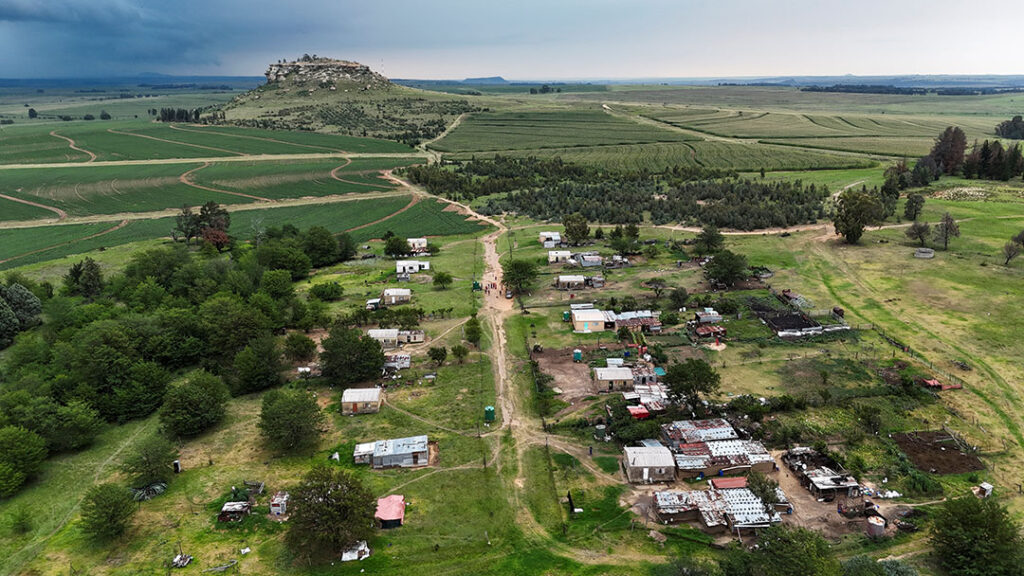South Africa’s Border Management Authority (BMA) has deployed four drones and added 40 body cameras to halt illegal migration, smuggling and human trafficking at the borders it shares with six countries.
Using the new technology, the BMA arrested 6,253 undocumented immigrants trying to enter or leave the country from April 15 to April 24. This marked a 61% increase from the 3,841 people intercepted during the same period in 2024. BMA Commissioner Michael Masiapato said the authority recorded just more than 1,000,000 movements across the country’s 71 ports of entry during that time frame.
Of those apprehended, 2,019 were Zimbabweans, 1,921 were Basotho and 1,143 were Mozambican. The remaining 1,143 were Swatis and other nationalities, Masiapato said.
Minister of Home Affairs Leon Schreiber welcomed the arrests and issued a stern warning to those who attempt to enter or leave the country illegally.
“Our message to would-be illegal immigrants and smugglers is clear: for the first time ever, we are now watching the borderline during the day, we are watching at night, we can see your body heat wherever you try to hide, and we will catch you,” Schreiber said in a news release. “As we roll out more and more cutting-edge technology, there are fewer and fewer places to hide for criminals who undermine our national security.”
Thermal Detection Technology
The drones are equipped with night vision cameras, which include thermal detection technology. They are powered by artificial intelligence (AI) that allows the devices to recognize and lock onto heat sources, vehicles or moving people. They can travel up to 43 kilometers per hour, during extreme weather, in remote areas without GPS and even underground, though usually for mining operations.
The BMA said in April it was training eight officers to become expert drone pilots. They operate the devices in shifts and travel to various entry ports across the country.
During and after their April deployment, drones helped the BMA arrest 112 people involved in facilitating illegal migration into the country, including a South African man at the Beitbridge post on the border with Zimbabwe. Masiapato said facilitators charge undocumented foreigners between $16 and $20 to cross the border.
“What we are doing seriously now is identifying and arresting the facilitators,” Masiapato told Zimbabwe.com. “These individuals aren’t deported — instead, they’re taken to the police station in Musina and charged for aiding and abetting. It is great to capture the groups of [undocumented] people but they are not the ones organizing this [illegal crossing]. We need to get the people who organize for these people being transported into the country, the people who are pulling the ropes, like we did in Lebombo [border in Komatipoort, Mpumalanga].”
‘Wall of Sensors’
Although the drones have proved effective, they are not deployed more frequently due to budget concerns. The Department of Home Affairs has acknowledged the need for increased investment in surveillance technology and has submitted a request for more funding to the National Treasury, according to Ricardo Texeira, a defense and national security analyst at defenceWeb.
Texeira called for a “wall of sensors” approach to border security. This approach also is known as a “virtual wall” or “digital wall.” It relies on advanced surveillance technologies and data analysis rather than physical barriers. Writing for defenceWeb, he advocated for the Meerkat Wide Area Surveillance System (WASS), developed by South Africa’s Council for Scientific and Industrial Research.
The system integrates ground surveillance radar and electro-optical sensors capable of detecting and classifying movement across wide areas. Created to combat rhino poaching in Kruger National Park, it offers real-time data to command centers, enabling swift, targeted responses.
“Proven to operate effectively under harsh environmental conditions, Meerkat has significantly contributed to wildlife protection, demonstrating its potential for broader security roles,” Texeira wrote.
He argued that WASS could be merged with other locally produced systems, including Ground-based Surveillance and Classification Radar, RSR 903 Ground Surveillance Radar and the PIMS X300 Mobile Sensor Station, for greater surveillance.
“By adopting an integrated network of modern surveillance technologies, anchored by domestically produced technology, the country can build a resilient, intelligence-led border security framework,” Texeira wrote.

